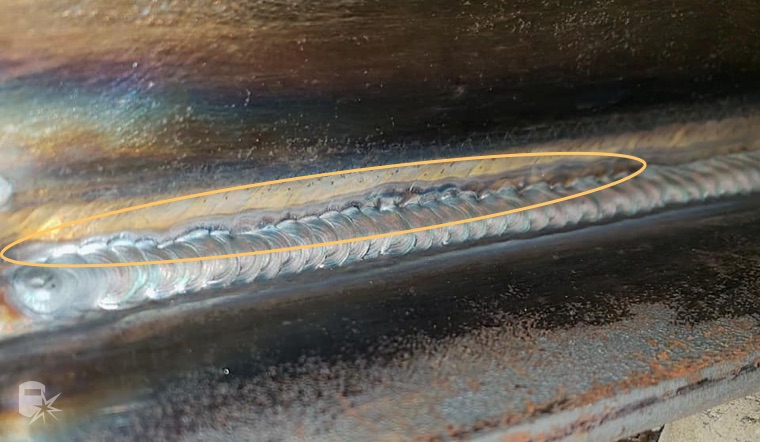Best Practices for Preventing Weld Undercut: Grasping the Basics
Best Practices for Preventing Weld Undercut: Grasping the Basics
Blog Article
Crucial Tips for Welders: Preventing Undercut Welding and Ensuring Stronger Weld Joints
In the realm of welding, attaining strong and resilient weld joints is the cornerstone of producing high-grade job. One common difficulty that welders often encounter is undercut welding, which can jeopardize the integrity of the weld joint.

Understanding Undercut Welding
Undercut welding is a common welding defect that takes place when the weld steel fails to appropriately fill up the groove and leads to a groove-like clinical depression along the weld grain. This flaw weakens the weld joint, making it vulnerable to splitting and failure under tension. Undercutting can be brought on by different elements, including too much welding current, high welding rate, incorrect electrode angle, incorrect electrode dimension, and bad welding technique.
One of the main reasons for undercut welding is a discrepancy between the welding existing and the welding speed. If the welding current is expensive or the welding rate is also fast, the weld steel might not sufficiently fill up the groove, bring about damaging. Furthermore, utilizing an electrode that is as well big can cause a similar end result, as the excess metal can not properly flow right into the groove.
To stop undercut welding, welders ought to guarantee they are making use of the appropriate welding parameters, maintain an appropriate electrode angle, pick the proper electrode size, and technique appropriate welding techniques. By dealing with these factors, welders can reduce the risk of undercutting and create stronger, much more reliable weld joints.
Appropriate Welding Method
Effective welding strategy plays a crucial duty in guaranteeing the high quality and honesty of weld joints. Correct welding technique entails a combination of precision, adherence, and ability to best practices. One fundamental element of appropriate welding technique is keeping the proper angle and range between the welding weapon and the workpiece. Welders need to also pay close interest to the travel speed and warm input to avoid concerns like undercutting, porosity, or insufficient fusion.
In addition, a consistent and regular hand motion is necessary for creating strong and sturdy weld joints. Welders need to go for smooth, consistent movements to make certain even distribution of the weld product. Correct adjustment of the welding weapon and filler product is additionally essential to accomplishing ideal infiltration and blend.
In addition, managing the heat input and picking the suitable welding parameters based on the product being bonded are critical consider attaining top notch welds - Preventing weld undercut. Welders need to follow the recommended settings provided by welding treatment specifications and adjust them as required based upon the certain requirements of the project. By mastering proper welding methods, welders can significantly improve the strength and integrity of their weld joints
Choosing the Right Electrode
When thinking about the relevance of choosing the best electrode in welding applications,Maintaining the proper angle and range between the welding gun and the work surface is basic. The option of electrode plays a crucial function in determining the quality and stamina of the weld joint. Electrodes are available in numerous types, each developed for specific functions and materials.
First of all, choosing the suitable electrode size is crucial. Thinner electrodes appropriate for welding slim products, while thicker electrodes are better for thicker materials and higher heat applications. Matching the electrode size to the density of the work surface helps attain a balanced weld.
Secondly, comprehending the product composition of the electrode is important. Various electrodes are designed for welding certain products like steel, stainless steel, light weight aluminum, or cast iron. Utilizing the appropriate electrode material ensures excellent fusion and minimizes the risk of issues in the weld.
Lastly, considering the welding position and strategy is vital when picking the electrode type. Certain electrodes are much better suited for upright or overhead welding settings, while others work well for flat or straight settings. Picking the appropriate electrode find out here based on the welding technique boosts the general weld high quality and honesty.
Preparing the Base Metal
To ensure a successful welding procedure, what initial actions should be taken when preparing the base steel for welding? Effectively preparing the base steel is vital for accomplishing sturdy and solid weld joints. The primary step in preparing the base steel is to cleanse it completely to eliminate any type of pollutants such as rust, dust, paint, or oil. This can be done utilizing a wire mill, chemical, or brush solvents. In addition, any kind of existing weld material or residue from previous welding need to be gotten rid of to ensure a tidy surface area for the brand-new weld.

Conducting Post-Weld Inspections

After conducting these analyses, welders have to compare the outcomes against industry standards and project requirements to ensure check my source that the weld joint satisfies all required requirements. Any kind of discrepancies or insufficiencies discovered during the post-weld examination should be immediately attended to via proper restorative procedures to ensure the weld's honesty. By diligently performing post-weld examinations and without delay dealing with any kind of concerns, welders can promote the high quality and integrity of their job, eventually adding to the safety and security and durability of the welded structures.
Conclusion

Finally, preventing undercut welding and making certain stronger weld joints require a combination of proper welding strategy, picking the appropriate electrode, preparing the base steel appropriately, and conducting post-weld assessments. By understanding the reasons for undercut welding and executing the necessary safety measures, welders can generate premium weld joints that meet market standards and make certain the structural honesty of the bonded parts.
Undercut welding is a common welding issue that happens when the weld metal stops working to effectively fill up the groove and results in a groove-like clinical depression along the weld bead (Preventing weld undercut). Damaging can be created by different factors, consisting of too much welding present, high welding speed, incorrect electrode angle, inaccurate electrode dimension, and bad welding method
One of the major reasons for undercut welding is a discrepancy in between the welding existing and the welding rate. If the welding current is as well high or the welding speed is too quickly, the weld metal might not effectively fill the groove, leading to damaging.Maintaining the proper angle and range in between the welding weapon and the workpiece is essential when taking into consideration the importance of picking the ideal electrode in welding applications.
Report this page